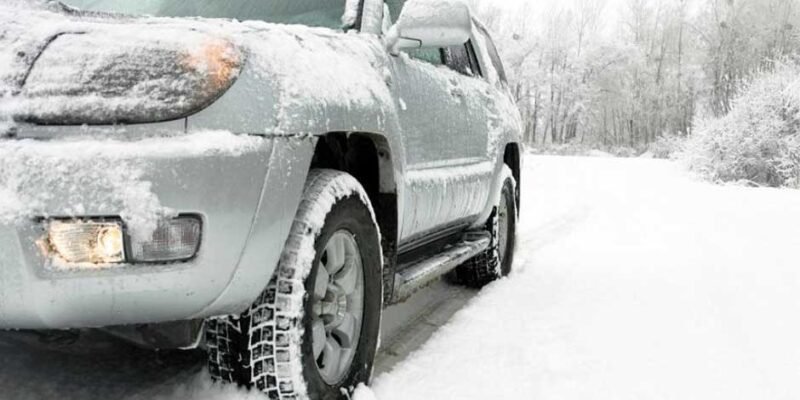Winter’s chill is upon us, and with it comes the all-too-familiar struggle of frozen car doors and locks. It’s a common winter tale: stepping out on a frosty morning, only to find yourself unable to access your car, a frustrating start to any day, especially when you’re already running late for work.
Fear not, for we’ve gathered some quick, effective, and time-tested tips to help you out when your car lock or doors decide to freeze over. In those moments when you need to get moving without delay, these solutions could be your saving grace. And, in case of an emergency, whether due to frozen locks, malfunctioning mechanisms, or keys locked inside, don’t hesitate to contact a reliable car lockout service. They can dispatch a mobile technician to your location in under 30 minutes, ensuring you’re not in the cold for too long.
The Winter Challenge: Rain Followed by Hard Frost
Imagine this all-too-familiar winter dilemma: It’s early morning, still dark outside. You step out, planning to warm up your car for a few minutes before heading out, only to find that overnight rain has led to a hard frost. The temperatures have plunged well below freezing, causing the water to freeze within the door shuts, leaving you unable to insert or turn the key in the lock.
It’s crucial to take a deep breath and stay calm. There are several practical solutions to try, and we’ll walk you through them. So, before you let this frosty challenge dampen your day, explore these effective ways to tackle this icy obstacle.
Exploring Every Entry: Checking All Doors and the Boot Hatch
Sometimes, the simplest solutions can elude us, especially when caught in a stressful situation like being locked out of a frozen car. It’s easy to overlook the obvious when you’re in the thick of it, so here’s a gentle reminder.
Before you try any complex fixes, have you checked every possible entry point to your vehicle, including the boot hatch? It’s not just about the passenger door. Depending on where your car is parked and the direction of the wind, some locks might freeze while others remain unaffected. And if you’re driving a hatchback, remember to give the rear hatch a try. One of these alternative entrances is your ticket to getting on the road, even on the frostiest of mornings.
Warm Up Your Key to Beat the Freeze
Heat can work wonders on those frosty mornings when your car lock won’t budge. Grab a lighter or any gentle flame source and carefully warm up the metal part of your car key for a few seconds. Then, with a soft touch, try to insert the key into the lock. Remember, no forceful or sudden movements – patience is key here.
Keep going if the first attempt doesn’t do the trick. Gently reheat the key and try again, inserting it fully into the lock. If it still won’t turn, heat the key and leave it in the lock for a few seconds, allowing the warmth to melt the icy barrier inside the lock’s mechanism. Finally, with a gentle twist of the key, you should be able to unlock the door. This simple yet effective method could be your secret weapon against those stubborn winter locks.
The Hairdryer Hack for Frozen Locks
If your car is conveniently parked in your driveway, you’re in luck – the hairdryer method might be just what you need! Grab an extension cord and your trusty hairdryer, and close it to the frozen lock. Gently blow warm air directly into the lock barrel. This cozy breeze usually does the trick in a few minutes, making it easy to slide your key in.
If you’re also dealing with frosty windows or a frozen windshield, the hair dryer can be your go-to tool for a quick defrost. Our trusty hairdryers aren’t just for maintaining healthy hair; they also provide effective solutions for those chilly winter mornings.
Use a Lock De-Icer
When faced with a frozen car lock, reaching for your trusty lock de-icer is a lifesaver in these icy moments. Picture this: with its cleverly designed small nozzle, you take your de-icer and gently insert it into the stubborn lock. A quick squeeze or press, and voilà!
But here’s a little insider tip: don’t just save your de-icer for emergencies. These handy tools also prevent locks from refreezing, even in the bitter chill of -60°C. Many de-icers come with a corrosion inhibitor, giving your lock components extra protection. And if you’ve got a de-icer with isopropyl as its main ingredient, you’re also in for a bonus – it doubles up by whisking away any pesky grease.
Final Thoughts
Call a professional car locksmith if you’re uncomfortable tackling this or facing a particularly stubborn lock. They’re equipped with the right tools and techniques to quickly and safely get you back in your car without fuss. Whether you choose a DIY approach or professional help, you’re well on overcoming those winter lock challenges.

















Comments